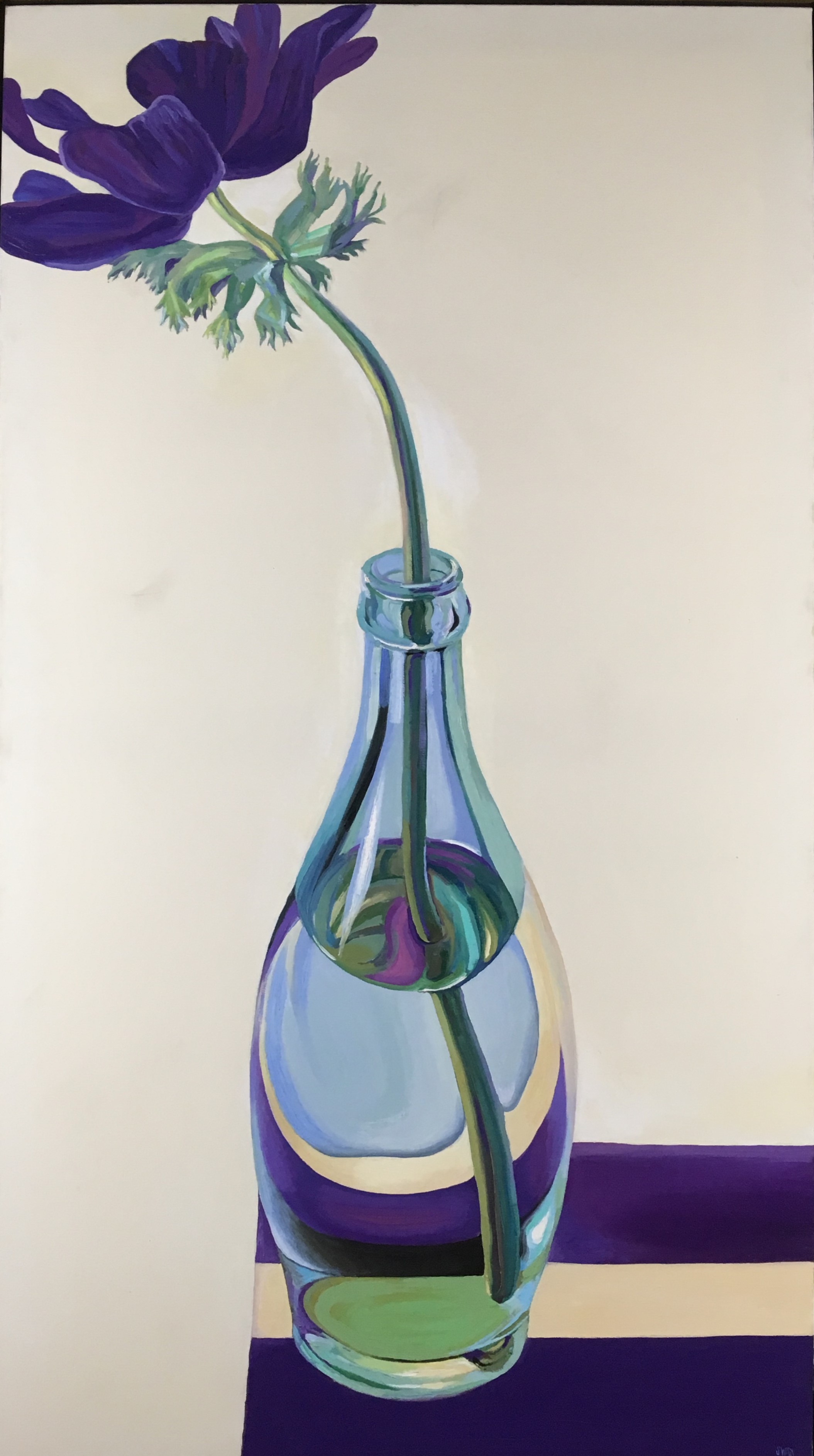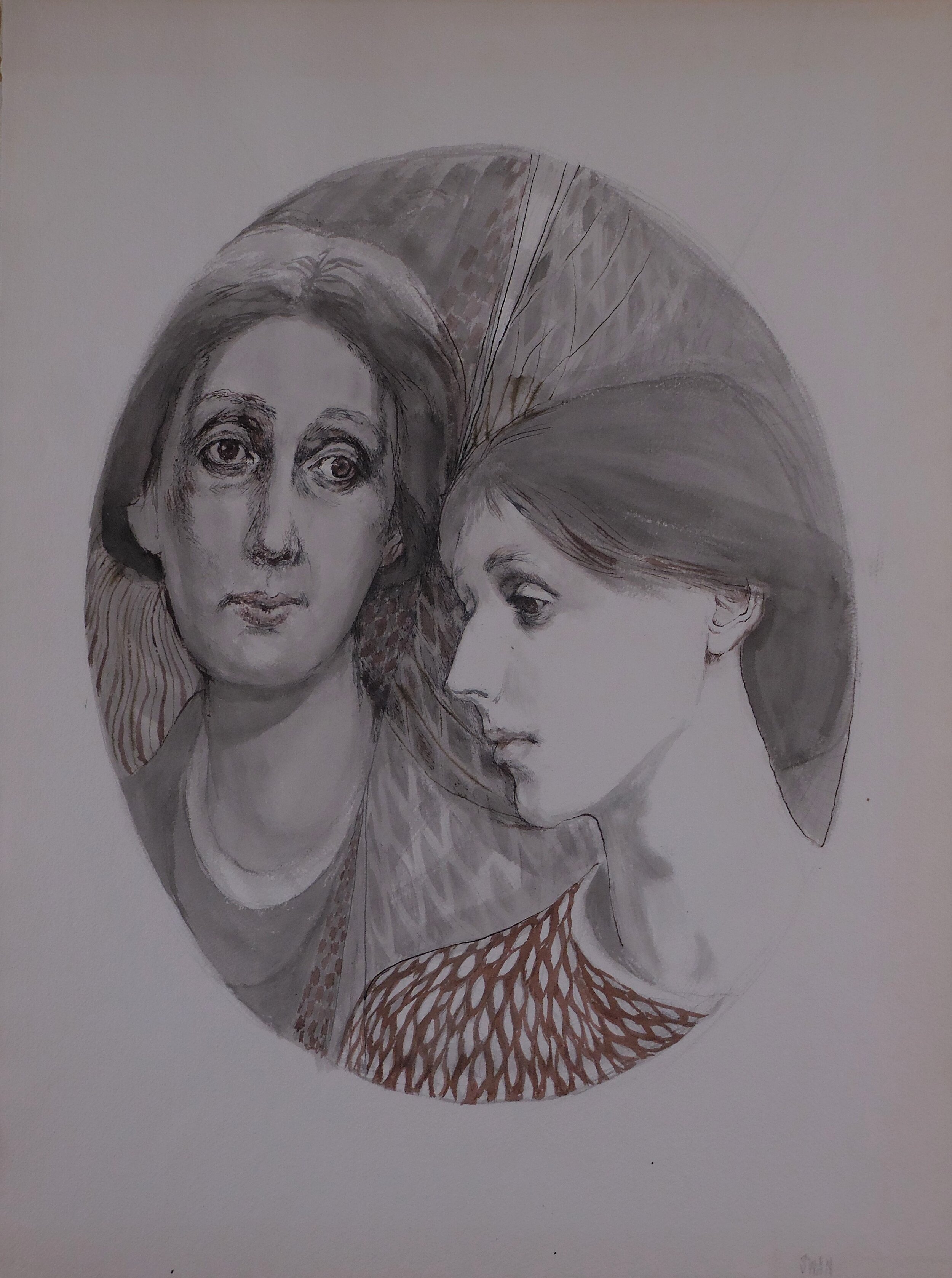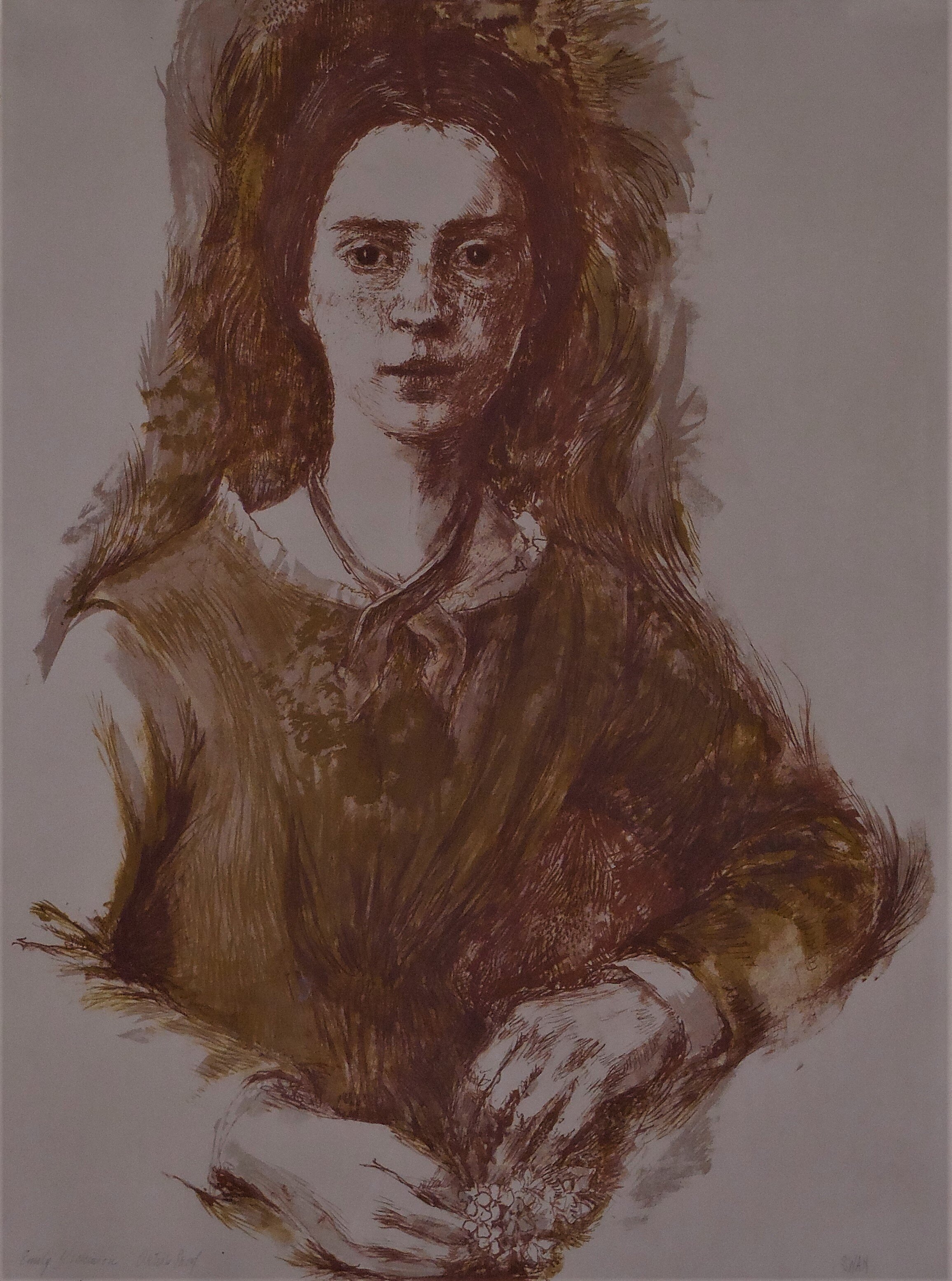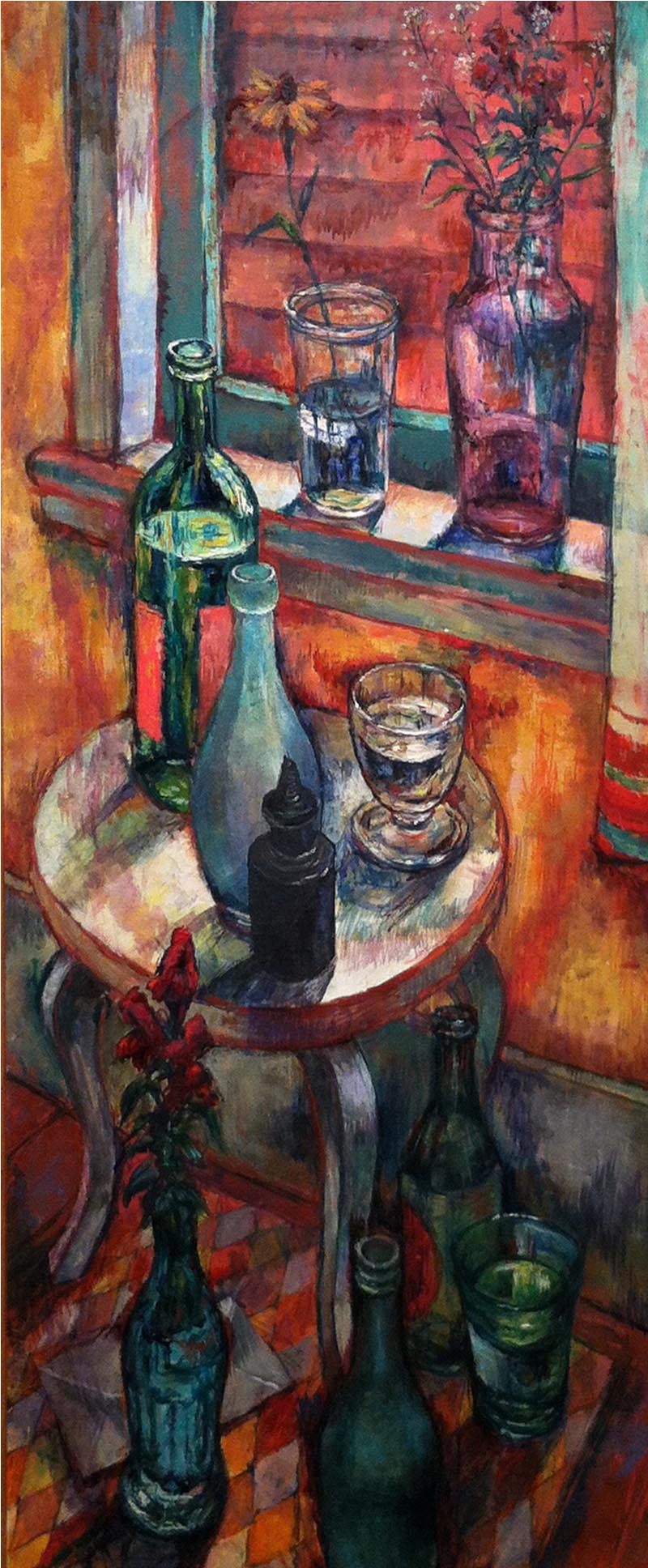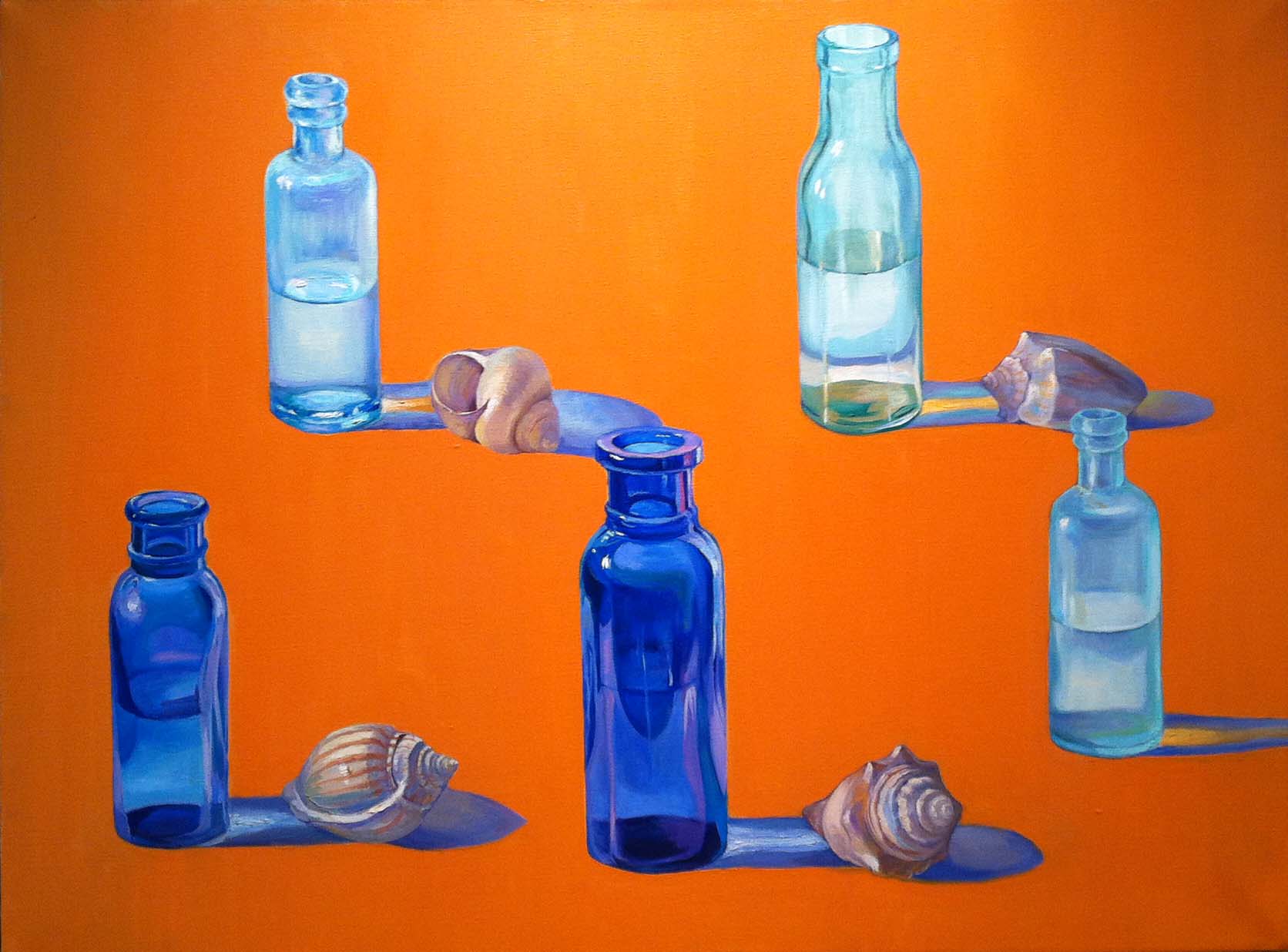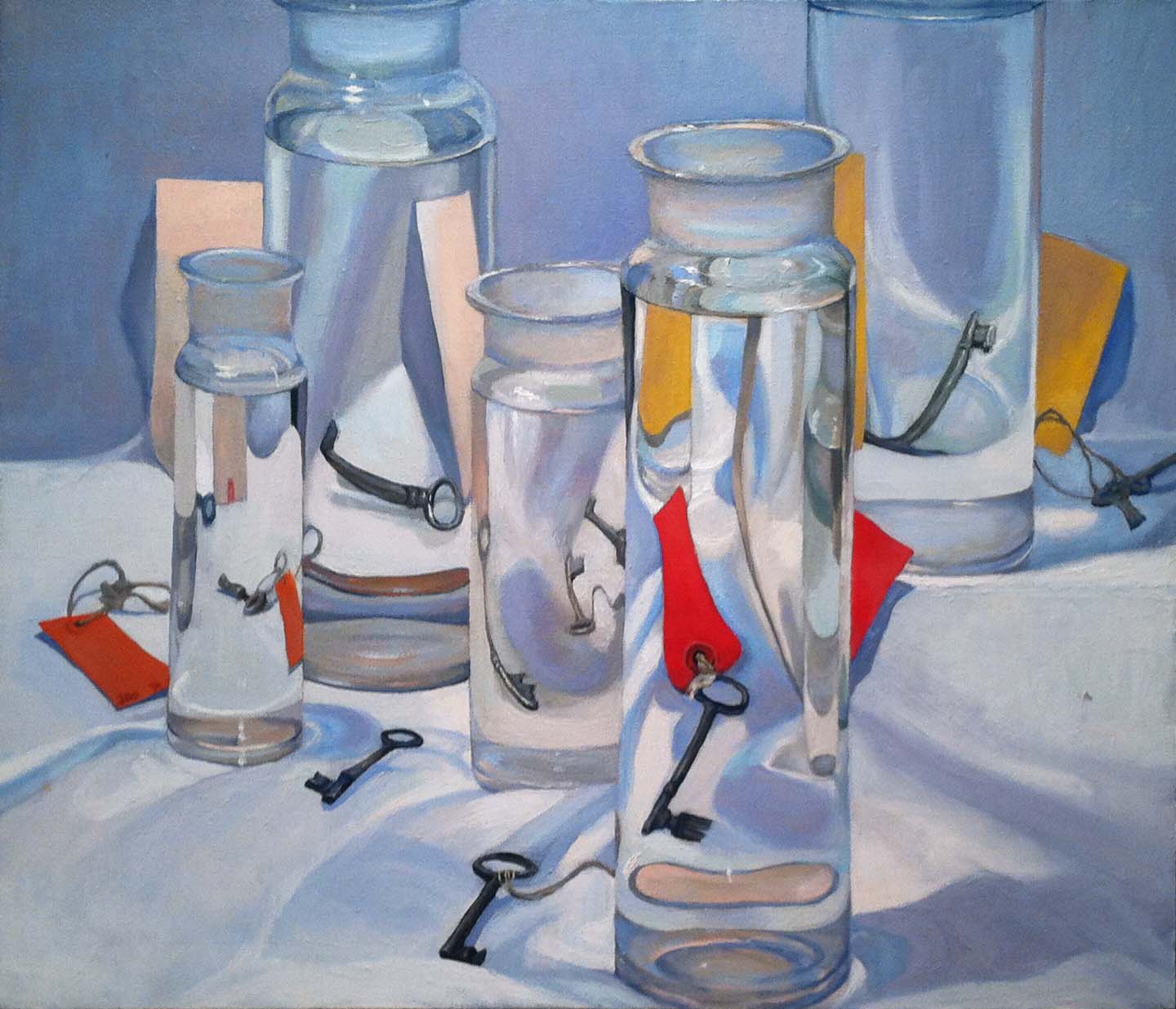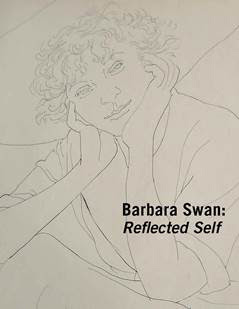Barbara Swan
Early in her career, Barbara Swan (1922-2003) was closely associated with the Boston Expressionist school. Having studied at the School of the Museum of Fine Arts under Karl Zerbe, Swan adopted elements of expressionism’s themes and techniques. Eventually, she went on to formulate a very different kind of artistic vision, based on direct observation. In her portraits and still lifes, Swan utilized realism as a means to find a deeper understanding of the subject. In her portraits Swan sought intimacy with the sitter. In her still lifes (of bottles filled with water, patterned fabrics and art historical references) she addressed questions of how we perceive the world and what gives an object meaning.
Before attending the School of the Museum of Fine Arts, Swan earned a B.A. in art history from Wellesley College. She was among the first group of women, in 1961, to receive a fellowship from the Institute for Independent Study (then called the Bunting Institute) at Radcliffe College. Swan held two residencies at the MacDowell Colony and a two-year traveling fellowship from the School of the Museum of Fine Arts. Her work is included in the collections of the National Portrait Gallery, the Fogg Art Museum at Harvard University, the Philadelphia Museum of Art and the Museum of Fine Arts, Boston, among many others. Major exhibitions of Swan’s work have been held at the Boston Public Library, Danforth Art, the Addison Gallery of American Art, and the Museum of Art, University of New Hampshire, Durham.
Swan’s time at the Radcliffe Institute is chronicled in the book “The Equivalents: A Story of Art, Female Friendship , and Liberation in the 1960s” by Maggie Doherty (Random House, 2020).

